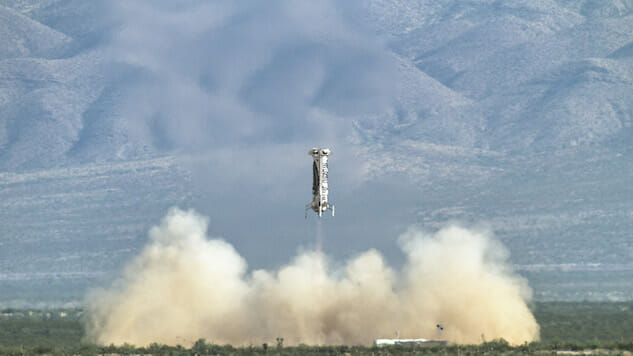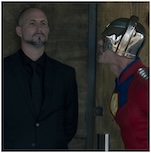Space Matter: Let’s Talk about Blue Origin

Space Matter is a weekly column that delves into space science and the mechanics of spaceflight. From the latest discoveries in the universe around us to the fits and starts of rocket test flights, you’ll find analysis, discussion and an eternal optimism about space and launching ourselves into the cosmos.
![]()
We hear a lot about SpaceX—after all, they’re making splashy headlines with their launches and first-stage rocket landings. In addition, they’re one of two companies (along with Boeing) building crew capsules to eventually ferry astronauts to and from the International Space Station for NASA. But there are other space tourism/travel companies making big advancements, and one of these is Blue Origin.
Blue Origin and SpaceX have a few things in common, namely they are both led by entrepreneurs with dreams of space. Blue Origin was created by Jeff Bezos, the CEO of Amazon.com, in 2000, two years before Elon Musk founded SpaceX. However, we’ve only been hearing about Blue Origin for the past few years. For the first decade and a half of its existence, the company had a (somewhat bizarre) policy of being very tight-lipped—no one knew what the company was up to or what their goals were because they weren’t talking to anyone.
In 2015, though, Blue Origin lifted its policy of self-imposed silence, and the media, space enthusiasts, and interested followers were able to take a close look at the company for the first time.
 Founder Jeff Bezos at Mission Control (Image credit: Blue Origin)
Founder Jeff Bezos at Mission Control (Image credit: Blue Origin)
Blue Origin’s primary launch vehicle is a suborbital rocket called New Shepard (named after Alan Shepard, the first American in space), and its main mission is to ferry space tourists to and from space. During the flight, the passenger vehicle, a reusable capsule, separates from the rocket and parachutes to a (theoretically) soft landing, helped along by jets to cushion the capsule.
The capsule boasts six cushioned seats, each of which faces the outside of the spacecraft. Large windows provide a panoramic view for each passenger—Blue Origin spokespeople claim they’re the largest to ever be flown in space. This makes sense—windows are heavy, and when you’re going to space, weight is everything. It’s more important to have large windows for a tourist flight than an Apollo capsule or a space shuttle. It’s unclear whether this claim includes or excludes the International Space Station, which has a cupola for observation and scientific experiments.
![]()
The New Shepard rocket is fully reusable (unlike SpaceX’s Falcon 9, which only boasts reusability for the first stage—but New Shepard is only a one-stage rocket). After separating from the crew capsule, the rocket returns to its launch site, landing upright on the desert surface. It wasn’t until the middle of last year that Blue Origin took a page from SpaceX’s book and streamed a New Shepard launch and landing online (the rocket’s fourth successful test). In fact, it’s worth mentioning that it was Blue Origin and not SpaceX that landed a rocket upright for the first time; we just didn’t get to see it on our screens.
 The New Shepard rocket comes in for a landing (Image credit: Blue Origin)
The New Shepard rocket comes in for a landing (Image credit: Blue Origin)
-

-

-

-

-

-

-

-

-

-

-

-

-

-

-

-

-

-

-

-

-

-

-

-

-

-

-

-

-

-

-

-

-

-

-

-

-

-

-

-

 The New Shepard rocket takes off from the west Texas launch site (Image credit:
The New Shepard rocket takes off from the west Texas launch site (Image credit: 






































